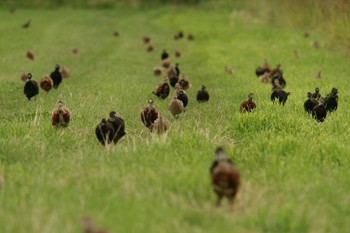Win CENS ProFlex DX5 earplugs worth £1,149 – enter here
Mind out for mould!
<strong>Choosing feed to keep your birds strong</strong>

This summer has now officially been declared the wettest in 100 years, with the least sun since 1980 ? causing a very challenging rearing and release period for all shoots. It has also affected the harvest, leaving us with less feed of lower quality for the coming season.
The early droughts followed by excessive rain and little sunshine have resulted in a poor growing season and delayed the harvest. Depending on the growing region, yields have been down by between 10 and 25 per cent. We are seeing a large range and variation in the quality of wheat across the country, with bushels ranging from low 50s to mid-70s. Though there is no direct link between bushel weight and energy content, it is still a good indicator of overall quality. Shoots should try to source wheat with a minimum bushel weight of 65 and try to buy the best quality wheat available. Despite lower weights and quality, the average protein levels have not been too bad at around 12.7 per cent compared with 11.8 per cent last year.
The danger of mould
Shoots should also be vigilant against the threat of mycotoxins this year. The cool, wet growing season will have stimulated mould growth prior to harvest and the delays in the harvesting will have exacerbated this risk. Ongoing rain increases the problem by providing optimal conditions for the moulds and fungi to thrive. Insect damage, worsened by the difficulty of spraying crops in wet weather, and weather stress will have allowed the invasion of moulds and their spores in to the plants. A visual inspection of the crop may be misleading ? the produce may appear fine, but it could still be contaminated. High levels of Fusarium are already being found this season.
Even when the initial presence of moulds and spores may be low, bad storage can increase these levels. In storage, the main factors affecting mould growth are humidity and temperature. The higher the temperature, the greater the chance of mould growth.
Dried grains containing less than 14 to 15 per cent moisture will reduce the growth, but a lot of grains have been harvested with high moisture levels. Many grain silos are not waterproof, or grains are not aerated, so pockets of moisture can create micro-climates ideal for mould growth and toxin production.
Alan Beynon is a vet at the St David?s Poultry Team (www.stdavids-vets.co.uk).
Related Articles
Get the latest news delivered direct to your door
Subscribe to Shooting Times & Country
Discover the ultimate companion for field sports enthusiasts with Shooting Times & Country Magazine, the UK’s leading weekly publication that has been at the forefront of shooting culture since 1882. Subscribers gain access to expert tips, comprehensive gear reviews, seasonal advice and a vibrant community of like-minded shooters.
Save on shop price when you subscribe with weekly issues featuring in-depth articles on gundog training, exclusive member offers and access to the digital back issue library. A Shooting Times & Country subscription is more than a magazine, don’t just read about the countryside; immerse yourself in its most authoritative and engaging publication.







